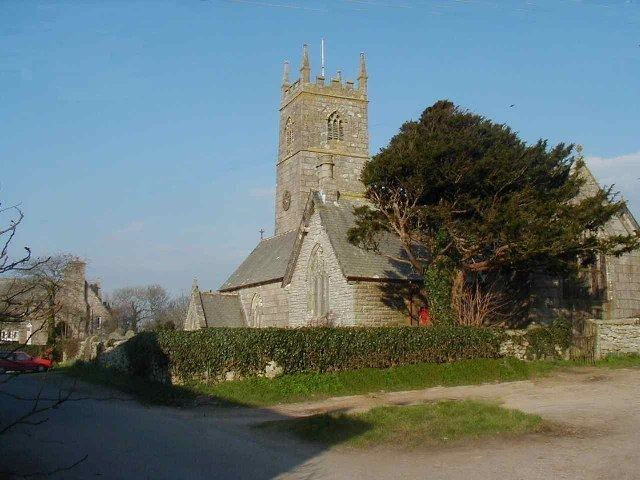OS grid reference SW645345 Ceremonial county Cornwall Country England Dialling code 01209 | Civil parish Crowan Region South West Local time Sunday 8:02 PM UK parliament constituency St Ives | |
 | ||
Population 2,581 (2011 census including Carzise ) Weather 8°C, Wind W at 31 km/h, 68% Humidity | ||
Crowan village and church in cornwall england explore cornwall
Crowan (Cornish: Egloskrewen) is a village and civil parish in Cornwall, United Kingdom. It is about three-and-a-half miles (6 km) south of Camborne. The River Hayle rises near Crowan and flows through the village and the railway branch to Helston passed nearby.
Contents
- Crowan village and church in cornwall england explore cornwall
- Map of Crowan Camborne UK
- Notable buildings and antiquities
- References
Map of Crowan, Camborne, UK
Crowan had a population of 2,375 (2001) which had increased to 2,454 in the 2011 census. Crowan Churchtown is not the largest settlement: there are villages at Praze-an-Beeble, Nancegollan, Bolitho and Leedstown and a hamlet at Black Rock (on the B3280 road four miles (6.5 km) south of Camborne and five miles (8 km) north of Helston). The hamlets of Carzise, Clowance Wood, Drym, Fraddam, Gwinear Downs, Horsedowns, Nine Maidens Downs, Noonvares, Paul's Green, Releath, Townshend and Tremayne are also in the parish.
Notable buildings and antiquities
The parish church is dedicated to St Crewenna and is built of granite. The Latin name of the saint is first given as Crewanus in 1201 though later forms are in the feminine. St Crewenna was possibly one of the Irish saints accompanying saints Germoe and Breaca. The church is of the 15th century but was substantially restored in 1872. There are numerous monuments to members of the St Aubyn family. Sir John St Aubyn, 5th Baronet, is buried at Crowan; his monument was carved by William Behnes. The three St Aubyn brasses (c. 1420, c. 1490 & c. 1550) are however now at Clowance.
In some 18th-century documents there is evidence that the parish was called Uni-Crowan and this may be connected to the fact that the parish was in two parts, one in Penwith and one in Kerrier hundred. The Kerrier portion was once a separate chapelry and may have had St Uny as its patron saint. Crowan feast was observed on the nearest Sunday to the eve of the Purification of the Blessed Virgin Mary.
Clowance House was the seat of the St Aubyns (from 1671 they were the St Aubyn Baronets, but the legitimate line ended with Sir John St Aubyn, 5th Baronet in 1839). Three years before his death the wings of the house burnt down on 10 November 1836. The resort of Clowance estate offers swimming, tennis, gym and fitness facilities, a bar and an Italian restaurant.
Prehistoric remains: Crowan parish has many remains of prehistoric times including barrows and stone crosses. There are four Cornish crosses in the parish; one cross is at Praze-an-Beeble and three are at Clowance. The original location of the Praze cross is unknown. Two of the Clowance crosses have a cross on one side and a crude crucifixus figure on the other; one formerly stood at Bold Gate on Clowance Down and the other at Binnerton Cross. The third cross is curiously ornamented on the front and back of the shaft; it formerly stood at the northwest corner of Nine Maidens' Down.
Manor Mill is an ancient mill used for grinding corn until 1946. It then became a pottery and later still a weaving mill.
